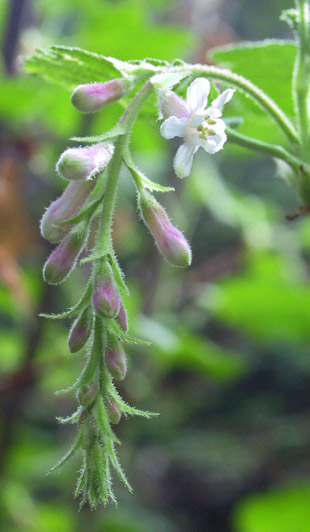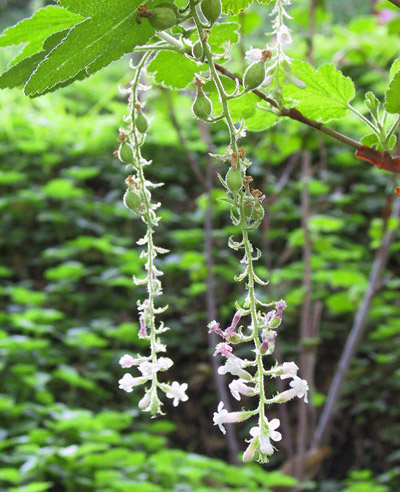
Winter is the time of renewal in the California garden, and one of the most colorful ambassadors of the season are members of the Ribes family. There are many to choose from, including the White-flowered (Ribes indecorum) and Golden currants (Ribes aureum), the spiky gooseberries (including Ribes speciosum, Ribes thatcherianum and californicum), and the Evergreen currant (Ribes viburnifolium). But if you want something really showy, then check out the many fine selections of the Chaparral currant (Ribes malvaceum).
All members of this particular family will dazzle you in winter with long, dangling pendants of white through pink flowers; ‘Dancing Tassels’ (discovered in Bryce Canyon on San Clemente Island in 1990 by Tom Hayduk and Bart O'Brien of RSABG) has perhaps the longest, measuring 4 inches or so. The winter flowers are enjoyed by hummingbirds (coming at a difficult time for them), and these mature into colorful fruit enjoyed by wildlife in spring. The downside of most Ribes is that they go completely dormant in summer, but this looks perfectly normal in a woodland setting, especially if you come to appreciate its peeling red-brown bark.
These plants can easily reach 4–6' in height and 2–4' in width. Most Ribes prefer a bit of shade and a touch of water; Ribes malvaceum is known to take more sun and less water than the norm.
